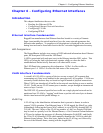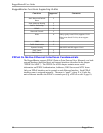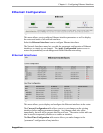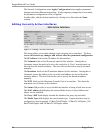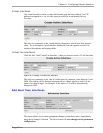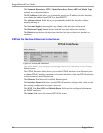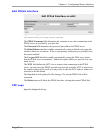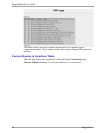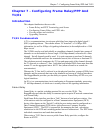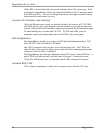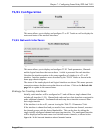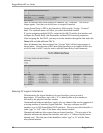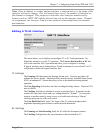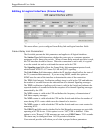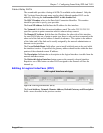
Chapter 7 - Configuring Frame Relay/PPP And T1/E1
Chapter 7 - Configuring Frame Relay/PPP And
T1/E1
Introduction
This chapter familiarizes the user with:
• Frame Relay and PPP Terminology and Issues
• Configuring Frame Relay and PPP Links
• Viewing status and statistics
• Upgrading Firmware
T1/E1 Fundamentals
A T1 is a communications circuit upon which has been imposed a digital signal 1
(DS1) signaling scheme. The scheme allows 24 “timeslots” of 64 Kbps DS0
information (as well as 8 Kbps of signaling information) to be multiplexed to a 1544
Kbps circuit.
The 24 DS0s can be used individually as standalone channels, bonded into groups of
channels or can be bonded to form a single 1536 Kbps channel, referred to as a clear
channel. Not all channels need be used. It is quite common to purchase N channels
of 64Kbps bandwidth and leave the remainder unused, this is known as fractional T1.
The telephone network terminates the T1 line and maps each of the channels through
the T1 network to a chosen T1 line. Individual and bonded DS0s from more than one
remote T1 can be aggregated into a full T1 line (often referred to as central site
concentration).
Whereas the T1 line itself is referred to as the physical interface, groups of DS0s form
channels and the protocols that run on the channels are known as a logical interfaces.
The RuggedRouter provides you the ability to operate Frame Relay or PPP over your
logical interfaces.
An E1 is is a communications circuit conforming to European standards, possessing
32 64 Kbps channels, of which one is usually reserved for signaling information.
Frame Relay
Frame Relay is a packet switching protocol for use over the WAN. The
RuggedRouter provides the ability to construct point-to-point IP network connections
over Frame Relay.
Each Frame Relay interface provides a “link” between a local and peer station. One
of the stations must be configured as a Data Communications Equipment (DCE)
device (often known as the “Switch”) while the peer station must be configured as a
Data Terminal Equipment (DTE) device (often known as Customer Premises
Equipment (CPE)). The DCE is responsible for managing the link, advertising
connections to the DTE and switching packets between connections. The DTE raises
individual connections and sends data on them.
When using a T1/E1 line to access a public Frame Relay provider, configure the
Router as a DTE.
RuggedCom 65



